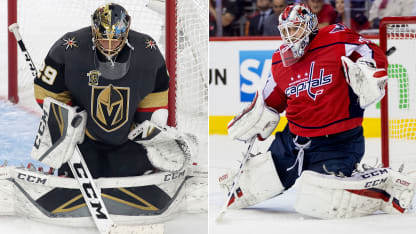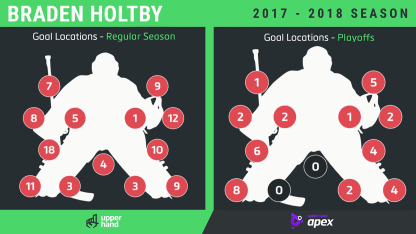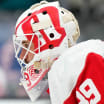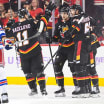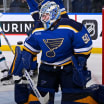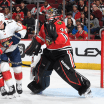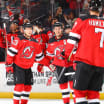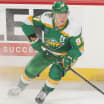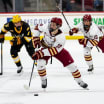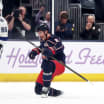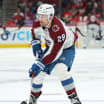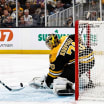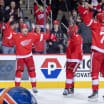Fleury is more aggressive with his positioning under Prior, but don't confuse that with the puck-chasing habits that led to meltdowns in the Stanley Cup Playoffs with the Pittsburgh Penguins from 2010-13. He has blended the improved post integration that helped turn around his career in Pittsburgh with Prior's positional preferences and is leading the NHL with a 1.68 goals-against average and .947 save percentage in the playoffs. But as Fleury plays more outside his crease, there are targetable trends, some of which have been exploited.
Goal trends
Off the rush: Prior wants his goalie to hold his ground rather than flow backward with the rush, and as fast as Fleury is, he can be attacked with lateral plays. Of the more than 3,500 goals tracked in breaking down playoff starting goalies for this project over the past two seasons, 38.5 percent were scored off the rush compared to end-zone play (61.5 percent). Fleury has allowed 49 percent off the rush in the regular season, and though that is down to 26 percent in the playoffs, four of the 10 goals scored by the Winnipeg Jets in the Western Conference Final came off the rush or quickly after setting up in the end zone. Vegas was slow to sort out defensive coverage on a lot of the goals in the regular season, and that continued with Mark Scheifele's backdoor goal in Game 3 and Tyler Myers' low-high goal in Game 4. Fleury's positioning outside his posts also played a role in the regular season, leaving more lateral distance to recover.
